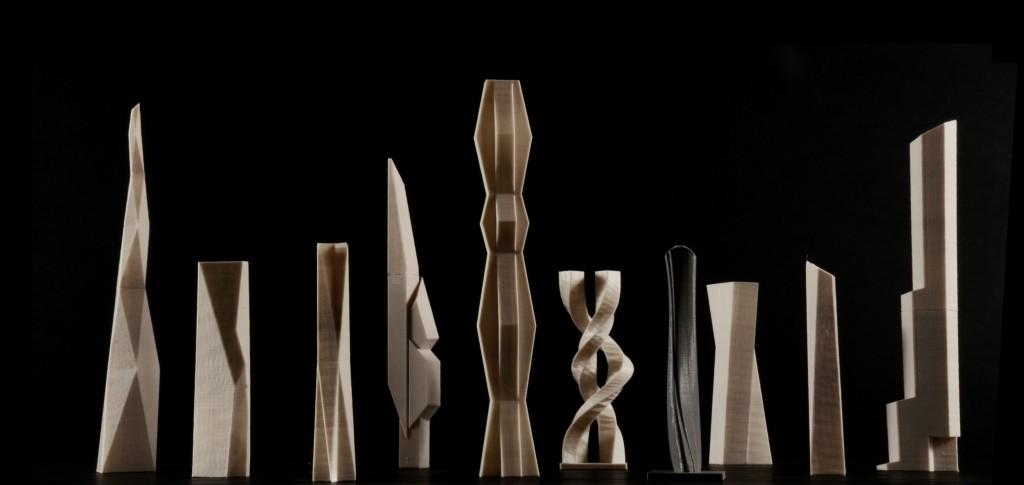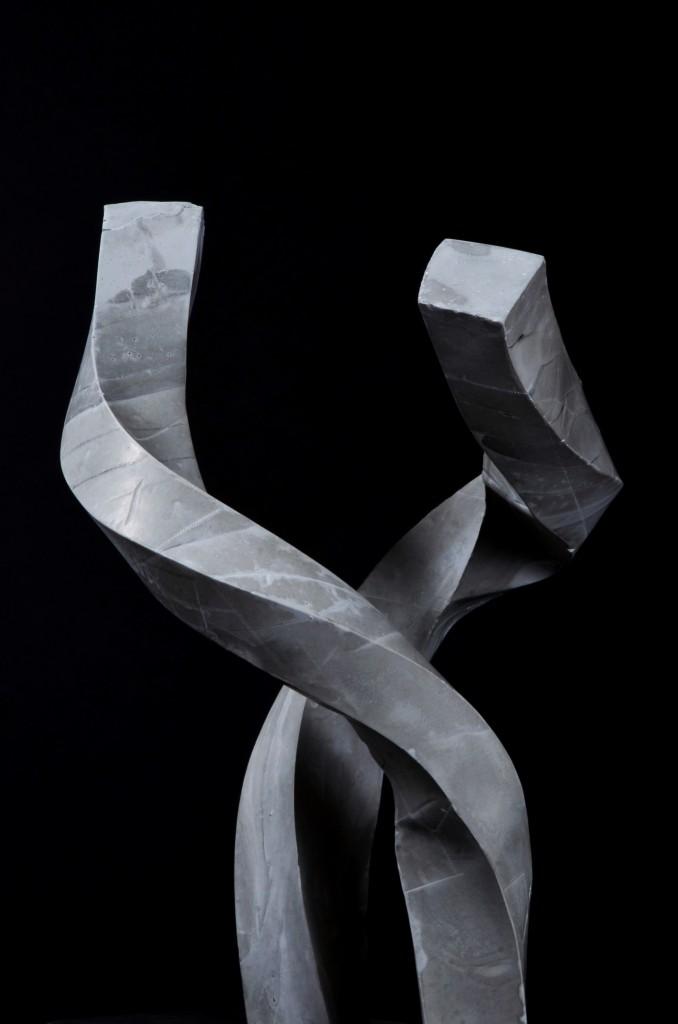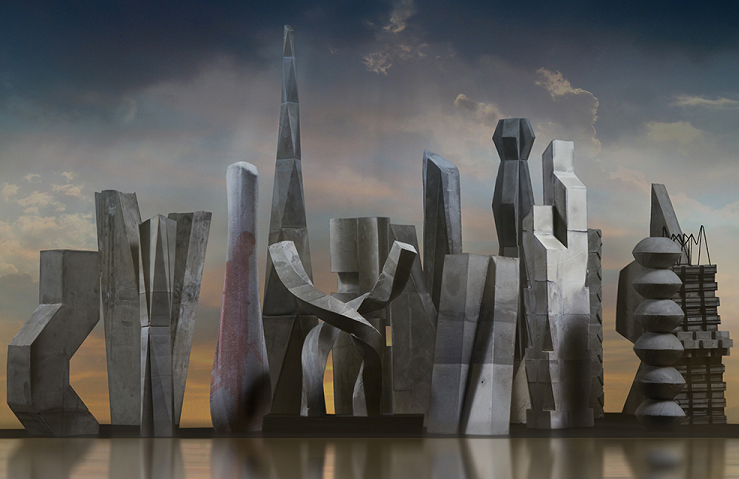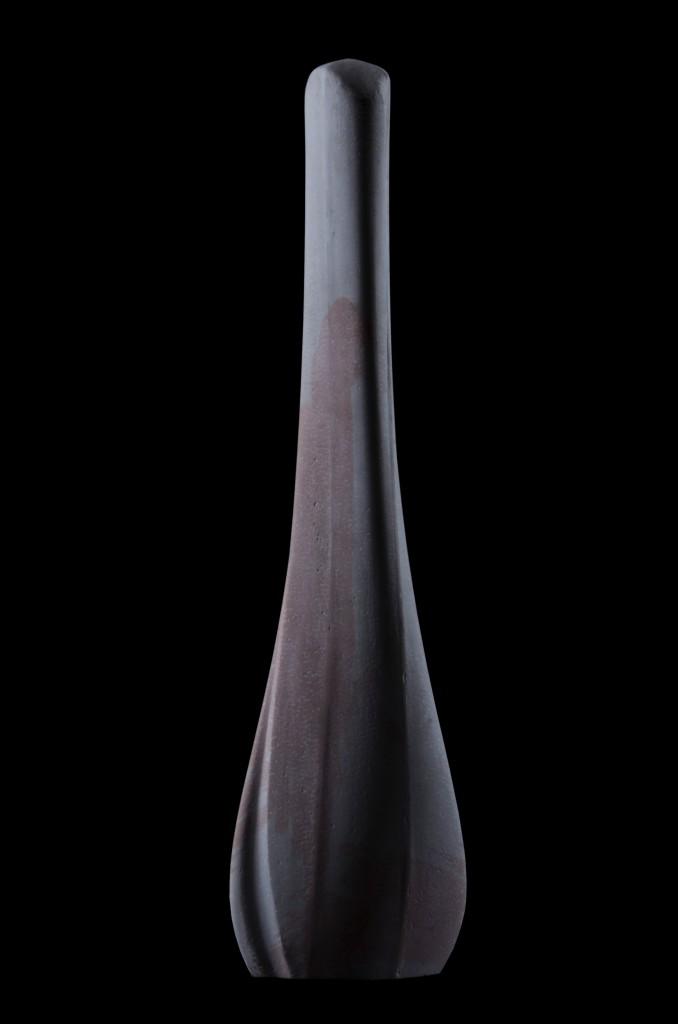Could NYC’s Skyline One Day Be 3D Printed? Texas A&M Students Explore Vertical & Virtual Density
“Architects tend to draw what they can build, and build what they can draw.” – William J. Mitchell
 What if the cityscape of New York were to one day resemble that of a sky high sculpture garden, perfectly designed and spectacular in its aesthetics? What if that familiar and historical architectural mishmash were to be replaced with 3D printed skyscrapers, making use of all the new digital, manufacturing, and material tools now coming into play?
What if the cityscape of New York were to one day resemble that of a sky high sculpture garden, perfectly designed and spectacular in its aesthetics? What if that familiar and historical architectural mishmash were to be replaced with 3D printed skyscrapers, making use of all the new digital, manufacturing, and material tools now coming into play?
This is what the brave first-year students of architecture at Texas A&M had to think about as they positioned themselves to do some theoretical–and very valuable–educational work in Manhattan for a project called ‘Exploring a Vertical Density.’
In an intensive challenge, these students, relatively new to architecture, were faced with conceptualizing, using digital design and modeling, and then creating 3D printed works to be, for the purposes of their class, considered as ‘highlights’ to the vast and famous skyline that will never cease to take your breath away–even if just a little bit–as you drive into the city, whether native or tourist.
 Theorist William Mitchell made a simple and true observation in the quote above, but it becomes quite interesting to consider with the advent of digital design. Today, the creative well is bottomless, limitless, and seemingly infinite in potential for ideas–and thanks to 3D printing, there is now a way to bring what were previously unrealistic designs into the physical world.
Theorist William Mitchell made a simple and true observation in the quote above, but it becomes quite interesting to consider with the advent of digital design. Today, the creative well is bottomless, limitless, and seemingly infinite in potential for ideas–and thanks to 3D printing, there is now a way to bring what were previously unrealistic designs into the physical world.
As in medicine, the ability to use 3D printed models before forging ahead has presented many with that ‘aha’ moment as a structure is held in the hand, turned and considered, and brought along as the process is completed, whether that be in the operating room for a surgeon, or out in the field for an architect who has been able to build everything in 3D first.
Not only does 3D printing have its role in the end-game with new products and materials, for industries like medicine and architecture, it plays a large pre-game role as well, due to the need for prototypes which not only allow professionals to rely on a visual and physical model as a guide, but also to employ it as a communication tool to explain to peers exactly what the projected plan is–often taking an intricate, complex concept and making it far easier to work on as a group when everyone can see, touch, and turn a 3D prototype. And as was the case for the students at Texas A&M–seeing a concept as a tangible 3D model can truly reinforce learning of a complex subject.
Architectural students today are lucky in that digital design and 3D printing are the tools they are given to work with. No longer ideas of the future, this is their today. They are expected to use these new technologies in higher learning scenarios–and prospective employers also now expect them to graduate with the appropriate toolsets involving 3D design and 3D printing–with the portfolios tucked away to prove it.
At Texas A&M, students are on their way to success already, taking on quite the challenge for their first year in architectural studies as they are thrust into the new world of fabrication which affects many other industries as well. They were also put to the test in showing, as Mitchell put forth, that they as architects could indeed build what they were able to draw. The challenge is obvious in that nearly anything can be drawn–but can nearly anything be built?
“At a time when architecture students can draw nearly any geometry through their use of the current collection of digital tools, it is essential that they obtain a more profound understanding of the ongoing advancements being made in the area of fabrication,” said instructor Alireza Borhani.
 One can see the immediate value in such a project as it causes students to find that balance between creating and realizing. The results in 3D print are stunning–and with the idea that buildings like these structures could feasibly become real–the project is incredibly thought-provoking.
One can see the immediate value in such a project as it causes students to find that balance between creating and realizing. The results in 3D print are stunning–and with the idea that buildings like these structures could feasibly become real–the project is incredibly thought-provoking.
With their concepts in place and digital designs finalized, the architecture students made preliminary models using a cement called Rockite. Once completed, they 3D printed these structures for exploration and comparison of both digital and real work.
“After making concrete models, students 3D-printed a series of prototypes with a basic understanding of printing layer upon layer of materials to explore and compare the digital and analog means of fabrication,” reported Borhani. “To this end, through hands-on learning opportunities allowing students to take advantage of the unprecedented development of additive manufacturing (3D printing), this project endeavored a better understanding of how an exploratory design concept could be constrained to suit different fabrication considerations.”
 Students not only designed and made true works of art for their conceptual ‘vertical communities,’ but they were able to consider the transformations that occur during the architectural process and what part their tools play in that.
Students not only designed and made true works of art for their conceptual ‘vertical communities,’ but they were able to consider the transformations that occur during the architectural process and what part their tools play in that.
“In this project, the relationship between architectural ideas and the analog and digital tools used to express those ideas underwent a profound transformation. Direct, hands-on engagement with 3D printers and active participation at every stage of the additive fabrication process did not simply alter the way the students understood their design, it produced in them a wholly new method of concrete thought,” noted Borhani.
Also of obvious educational value in the project is looking at the impact 3D printing has the potential to make in the future of architecture. Currently, as new students in their field they were able to see how 3D printing can perhaps transform not only the world of architecture but also their preliminary education–and how they learn, conceptualize, and problem-solve. They are able to look at traditional versus progressive technology and see the new possibilities which are indeed going to be part of their future careers.
Do you think 3D printing could have a truly transformative impact on the famous skylines of our world one day? How do you see it impacting architecture–and other industries–on a less dramatic level in the next few decades? Discuss in the 3D Printed Skyscrapers forum thread over at 3DPB.com. Check out more of the students’ designs in the video below.
Subscribe to Our Email Newsletter
Stay up-to-date on all the latest news from the 3D printing industry and receive information and offers from third party vendors.
Print Services
You May Also Like
Low-cost “Suzy” Polymer Powder 3D Printer is Faster and Cheaper than Past Models
Polish laser powder bed fusion (LPBF) firm Sinterit has released a follow-up to its predecessors, Lisa and Nils, called Suzy, a $19,490 printer equipped with a 30W fiber diode laser....
India’s $58M Space Fund Is a Boon for AM Innovation
India’s space industry is picking up serious momentum. With a projected $44 billion space economy by 2033, the country is aggressively expanding its capabilities, fostering private-sector participation, and reducing its...
Japanese Advanced Manufacturing Capabilities Grow in Europe with Sodick’s Purchase of Prima Additive
The global economy is currently undergoing a reshuffling in terms of what gets manufactured where. In large part, this trend is being driven by new geopolitical alliances and the need...
Bosch Invests €6M into Serial Auto Part 3D Printing
German industrial conglomerate Robert Bosch GmbH, the world’s largest supplier of automotive parts, has announced a new investment into Nuremberg, Germany additive manufacturing (AM) facility. The nearly €6 million in...



























